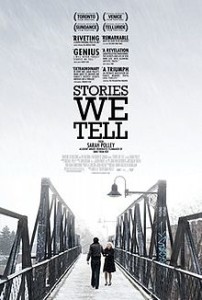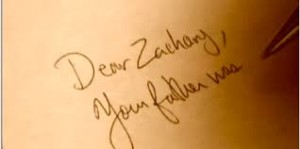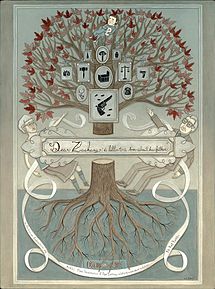As the end credits of Stories We Tell flashed on the Carnegie screen, I proceeded to walk out of class as a mixed bag of emotions: amazement, happiness, tearful and confusion being the major four. I felt amazed by the sheer genius behind this film- Polley did not have a direct narration, allowing her story to be told through the lens of the people she was closest to: her family. I was happy because despite this earth-shattering news that Polley and her family (particularly Michael) processed and endured, they were all still apart of each other’s lives and agreed to do the film and show their support for Sarah. I was tearful mainly because of the emotional journey the film takes the viewer on- I’m usually not the one who cries during movies but this film did cause my eyes to slightly fill with tears. Finally, I was confused mainly of why I was so emotionally invested in this film. Though I cannot go back to that Monday’s class, I believe I was invested because it was a real story, with real people who were sharing their real emotions and experiences. I’m not a huge documentary fan, but this film was truly brilliant.
Though I’ve already stated a few reasons of why I loved this film, the main reason would have to be the film’s subject matter involving family relationships. For me, my family is a huge part of my life, with a large extended family on both my mother’s and father’s side. So naturally, I am pulled to films that document a family’s struggles and triumphs, especially when the struggles are caused by the actions of other family members. To me, what is most interesting about families is no matter how much they fight among each other, they still remain a strong (though probably a little dysfunctional) support system. Keeping the family theme in mind, I decided to make this list the top 5 films to watch if you enjoy a dysfunctional, but loving family.
- Little Miss Sunshine (2006)
- People you may know: Abigail Breslin, Alan Arkin, Steve Carrell
- General plot: A black comedy road film where a family travels from New Mexico to California in a Volkswagon Microbus so Olive, the cute-but-awkward daughter, can compete in the Little Miss Sunshine’s beauty pageant.
- Best quote: “It’s okay to be skinny and it’s okay to be fat, if that’s what you want to be. Whatever you want, it’s okay.
- The Royal Tenenbaums (2001)
- People you may know: Gene Hackman, Gwenyth Paltrow, Ben Stiller, Owen Wilson
- General plot: A Wes Anderson comedy-drama film that follows three siblings from a wealthy family. Though they were extremely talented and successful when they were younger, but now as adults are disappointments and struggling with their lives.
- Best quote: “Anybody interested in grabbing a couple of burgers and hittin’ the cemetery?”
- Ordinary People (1980)
- People you may know: Donald Sutherland, Mary Tyler Moore
- General plot: A drama film that follows the lives of the Jarrett’s, a middle class family that is struggling with the recent death of the oldest son and the attempted suicide of the surviving son. As the surviving son tries to cope with his loss, he has many conflicts with his mother.
- Best quote: “So I was crying because I don’tknow if I love you anymore and I don’t know what I am going to do without that.”
- 51 Birch Street (2010)
- General plot: A documentary film that is the first person account of Doug, an adult whose father has announced that he is selling Doug’s childhood home and moving to Florida to begin a relationship with his secretary. Through cleaning the house, Doug discovers secrets of his late mother’s unhappiness.
- August: Osage County (2013)
- People you may know: Meryl Streep, Ewan McGregor, Julia Roberts, Abigail Breslin
- General plot: A drama film that follows the story of a dysfunctional family that reunites to search for Beverly, the respected patriarch who has gone missing. The majority of the family has seen or spoken to one another for many years, with the reason why becoming very evident after they are all under the same roof.
- Best quote: “Thank God we can’t tell the future, we’d never get out of bed.”
I apologize that I only listed one documentary but like I said, I am feature-length film person. Seriously though if you only check out one of these films, please make it August: Osage County– it is definitely in my top 10 films of all-time (do not listen to Rotten Tomatoes).



